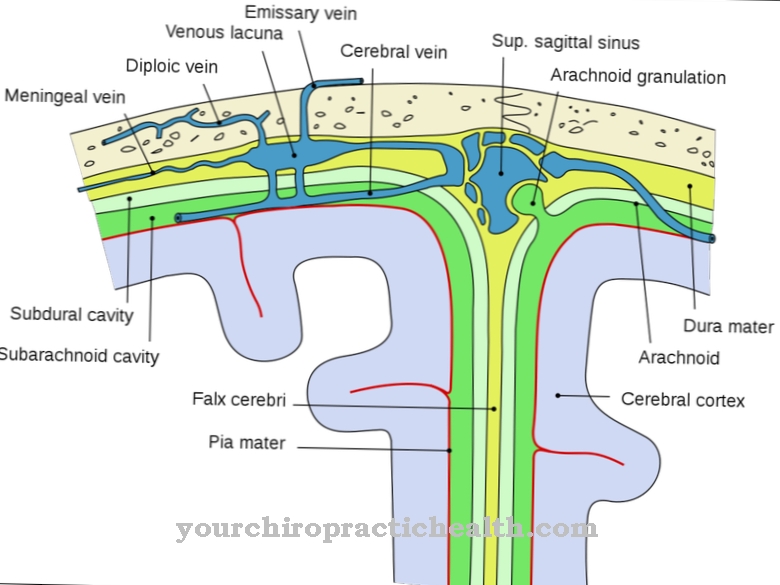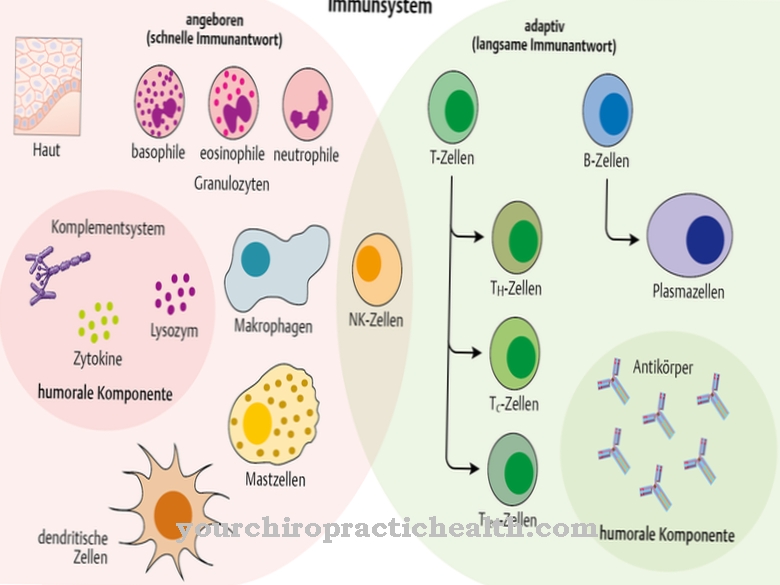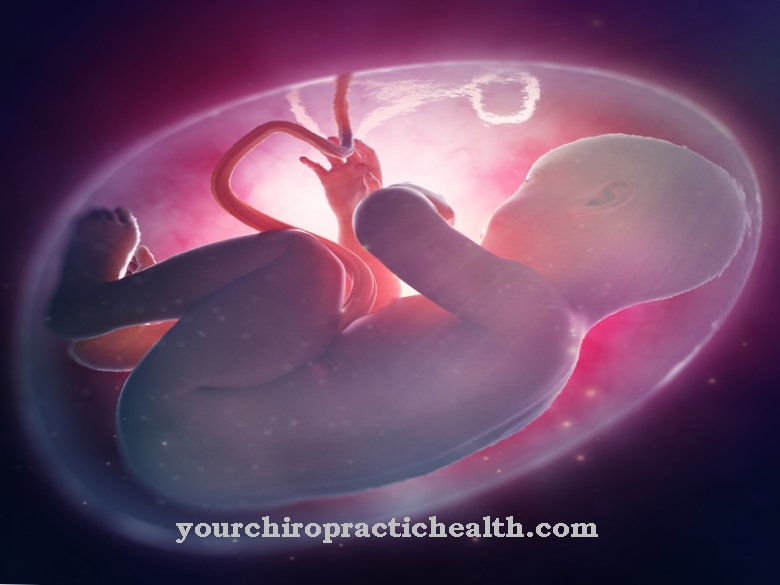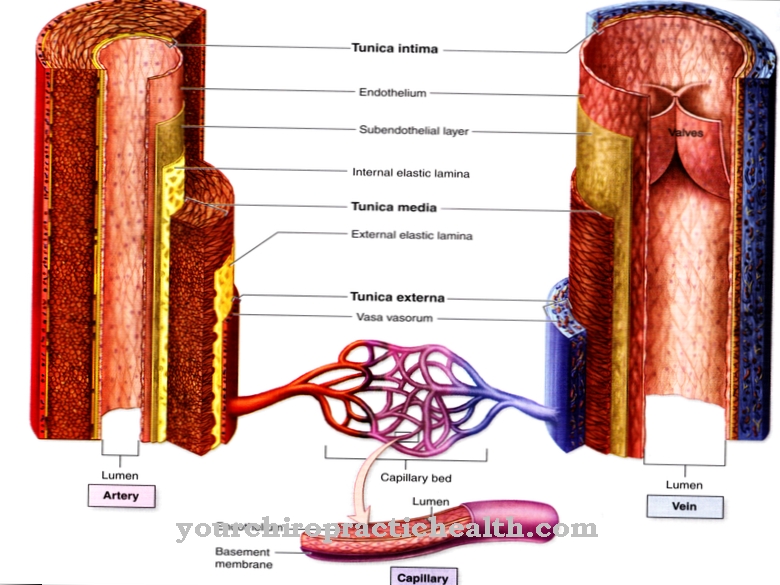In which Digestive tract there are several organs. These are responsible for the ingestion, digestion and utilization of food and fluids. Different diseases can influence the functioning of the system and sometimes cause severe symptoms.
What is the digestive tract?
The digestive tract can be differentiated into different sections and organs. It already begins in the mouth, where chewing movements and salivary glands break down the food with saliva. This process is the first step in digestion. Saliva contains enzymes that break down carbohydrates and other substances into smaller elements in the oral cavity. The mouth and throat are followed by the esophagus, which in turn opens into the stomach. After the food has been in the stomach for a while, the body passes it on to the intestines.
The absorption of components such as vitamins and minerals ultimately takes place in the intestine. The different parts of the intestine are also responsible for other tasks.Every living being needs a functioning digestive tract. This is the only way to ensure that the organism is supplied with energy and important nutrients. Ailments and illnesses in the stomach and intestines often lead to serious symptoms. This is why a quick visit to the doctor is usually inevitable.
Anatomy & structure
The food first reaches the mouth. Teeth and saliva are important elements of the digestive tract. After sufficient chopping, the chyme gets into the esophagus through the conscious swallowing process. This is a tube that connects the throat and stomach. Depending on the body size, the esophagus measures an average of 25 centimeters. It has natural constrictions in three regions and is unconsciously closed at the lower end by a muscle so that the stomach acid does not get into the esophagus and damage the mucous membrane.
The stomach has a capacity of approximately 1.5 liters. It is considered an extension of the digestive tract and continues the work that has already started in the mouth with the saliva. The mucous membrane and gastric juice, which is produced by the cells of the mucous membrane, are decisive for the function of the stomach. As soon as the organ has finished its task, the chyme leaves the stomach for the intestines. The emptying takes place in waves in smaller bursts.
The intestine can be differentiated into different sections. These include the small intestine, colon, and rectum. Digestion is closely related to the pancreas. This produces enzymes, which later reach the intestine and play a key role in the breakdown of food.
Function & tasks
The function of the digestive tract is ultimately based on the utilization of ingested food. In the course of several processes, the food is broken down into small elements and these are made available to the body. On the one hand the energy supply can be secured in this way, on the other hand it is also about minerals, proteins and vitamins that the human organism needs for various purposes.
After the food has been chopped up in the mouth and reached the stomach through the esophagus, it is initially used for storage. The chyme is gradually mixed and broken down into even smaller elements. The gastric juice plays an important role here. The stomach acid is able to eliminate pathogens and other undesirable substances that have been ingested through food. Accordingly, it can be described as a disinfectant. It also ensures that proteins can be digested. With the help of enzymes it is possible for the stomach to break down complex proteins. The food then enters the intestine.
Muscle movements throughout the digestive tract are responsible for transport. These occur in waves and are triggered without the conscious human will being able to control them. In the intestine, the food is finally broken down into such small components that they reach the cells via the bloodstream. The small intestine represents the longest part of the intestine. Here, carbohydrates, proteins and fats are broken down. Digestive enzymes that are produced in the pancreas are of particular importance. The small intestine then ensures that the nutrients pass into the blood. In the large intestine, the remaining water is withdrawn from the chyme.
Diseases
A particularly common symptom affecting the digestive tract is abdominal pain. It is not a disease in its own right. Instead, they often point out other complaints that are present. The unpleasant sensations can be triggered by different factors. These include, for example, duodenal ulcers, stomach ulcers, a food intolerance, appendicitis or biliary colic. Certain medications can also affect the digestive system as a side effect, causing pain. In the case of appendicitis, the appendix is first affected by the appendix.
Usually, such inflammation is followed by surgery to remove the appendix. Different inflammatory bowel diseases can affect the entire gastrointestinal tract. One example is Crohn's disease. The inflammation particularly often affects the last loop of the small intestine. Outbreaks of the disease occur at different intervals. So far it is not possible to cure Crohn's disease. Medication can still help.
In the case of inflammation of the gastric mucosa, acute and chronic diseases are differentiated. In most cases it is a chronic course that is triggered by various factors. Examples include bacteria and chemically toxic elements. Constipation can reduce the quality of life. Bowel obstruction, tumors, or other conditions rarely lead to defecation or hard stools. A precise diagnosis of the causes is crucial here in order to be able to initiate a suitable therapy.
Typical & common diseases
- Gastric ulcer
- Inflammation of the lining of the stomach (gastritis)
- Abdominal influenza
- Irritable stomach
- Stomach cancer
- Crohn's disease (chronic bowel inflammation)
- Appendicitis



























